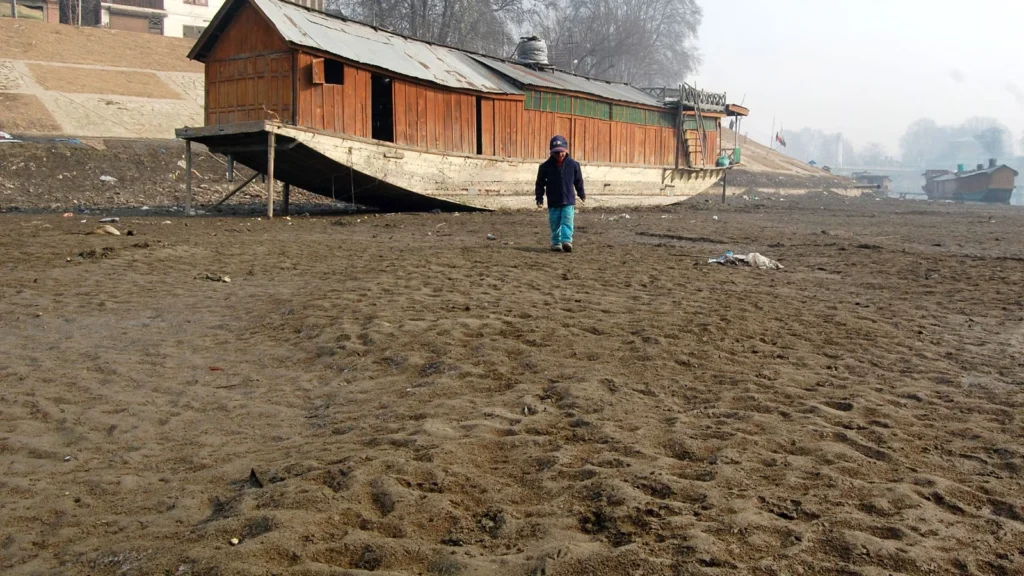Rising temperatures push up AC sales in Kashmir: ‘Would not have imagined this 5 years ago’

Srinagar, July 8:
For generations, Kashmir has been a symbol of natural coolness — its snow-capped mountains, alpine air, and lush valleys spared residents from the oppressive heat common in much of India. But that is changing rapidly. As climate patterns shift and temperatures soar, air conditioners, once a rare luxury in the region, are now flying off the shelves.
The Kashmir Valley is witnessing an unprecedented surge in air conditioner (AC) sales, driven by a string of hotter-than-usual summers. Residents who once relied solely on ceiling fans — or even just open windows — are now installing split AC units, coolers, and fans to combat rising heat.
A Change Few Expected
“In my childhood, summers in Kashmir meant mildly warm days and pleasant evenings. Now, we’re sweating indoors,” says Farhat Jan, a schoolteacher in Srinagar who recently bought her first air conditioner. “Even five years ago, I never thought we would need ACs in this climate. It feels surreal.”
Her experience is far from unique. Across Srinagar, Anantnag, Baramulla, and even smaller towns, electronics stores report booming demand for cooling appliances. In a region where heaters and kangris (traditional fire pots) have long dominated household purchases, cooling devices are becoming the new norm.
AC Sales Surge in the Valley
Retailers in Kashmir say the shift began gradually around 2021 but has accelerated sharply over the past two summers.
“From barely selling a few dozen ACs in a season, we’re now dealing with hundreds,” said Mohammad Rafiq, who runs an electronics shop in Srinagar’s Regal Chowk. “This year, our stock sold out by mid-June. Brands like Voltas, LG, and Daikin are in high demand.”
Rafiq attributes the increase not only to rising temperatures but also to growing awareness of energy-efficient options, especially inverter ACs that help save on electricity.
Interestingly, it’s not just urban areas witnessing the trend. Households in smaller towns like Pulwama and Kupwara are also making the switch, even if on a smaller scale.
Kashmir’s Changing Climate
The underlying cause of this shift is no mystery. Meteorological data confirms that the Kashmir Valley is warming faster than it used to. Summer temperatures now routinely exceed 33°C — a stark contrast from the mid-20s that were common just a decade ago.
In June 2024, Srinagar recorded a high of 35.2°C, one of the highest in over 40 years. Experts warn this is part of a broader trend, not a temporary spike.
“Over the last ten years, average summer temperatures in Kashmir have increased by nearly 1.5 to 2°C,” said Dr. Nayeem Rather, a climatologist at the University of Kashmir. “This isn’t just random weather. It’s part of a long-term warming pattern that’s accelerating due to global climate change.”
The once-reliable snowmelt cycle is also being disrupted. With less snowfall in winter and faster melting in spring, the Valley’s rivers and lakes are drying up sooner, leading to warmer ground and hotter summers.
From Heating to Cooling: Lifestyle Overhaul
Traditionally, Kashmiris invested heavily in winter-proofing their homes, from wooden insulation to gas heaters and electric blankets. Summer, in contrast, required little adjustment. But now, residents are remodeling homes with double-glazed windows, sun-blocking curtains, and even centralized cooling setups.
“Earlier, every design we made was focused on keeping houses warm during winter,” said Rehan Yousuf, a local architect. “Now, clients are asking for air ventilation plans, provisions for split ACs, and even heat-reflective paint.”
Real estate developers have also begun promoting energy-efficient apartments with built-in cooling features — something unheard of just a few years ago.
Not Everyone Can Afford to Adapt
While middle- and upper-class families are installing ACs to deal with the new heat, many others in rural and low-income communities remain vulnerable.
“In our village, we don’t even get 24-hour electricity, let alone afford an AC,” said Haleema Bano, a farm worker from Kulgam. “We spend afternoons sitting near rivers or under trees, hoping for some relief.”
This inequality in adaptation highlights the need for better infrastructure and energy access, particularly in rural Kashmir. Without investment, a large part of the population will remain at risk from heat stress and related health issues.
Environmental Concerns Rise
As more households turn to air conditioners, energy consumption across the Valley is climbing. Kashmir’s power grid, which already struggles with load shedding in winter, is now under pressure during summer too.
Moreover, environmentalists warn that increased use of air conditioners could lead to higher greenhouse gas emissions — potentially worsening the very problem they’re intended to solve.
“It’s a vicious cycle,” said Dr. Rather. “People use ACs because it’s hotter, but ACs increase energy demand and emissions, making the environment even warmer. We need smarter solutions.”
He suggests investment in green cooling technologies, better urban planning, and afforestation to naturally regulate temperatures.
A Wake-Up Call
The surge in AC sales across Kashmir is more than just a consumer trend — it’s a warning. The Valley, long sheltered from the extremes of the Indian summer, is now feeling the full force of a changing climate.
From cooling appliances to lifestyle changes, the people of Kashmir are adapting — but not without cost.
What was once unthinkable has become reality. As Farhat Jan says, “We used to say Kashmir is a paradise because of its cool climate. Now we’re just trying to keep the heat out of our homes.”






